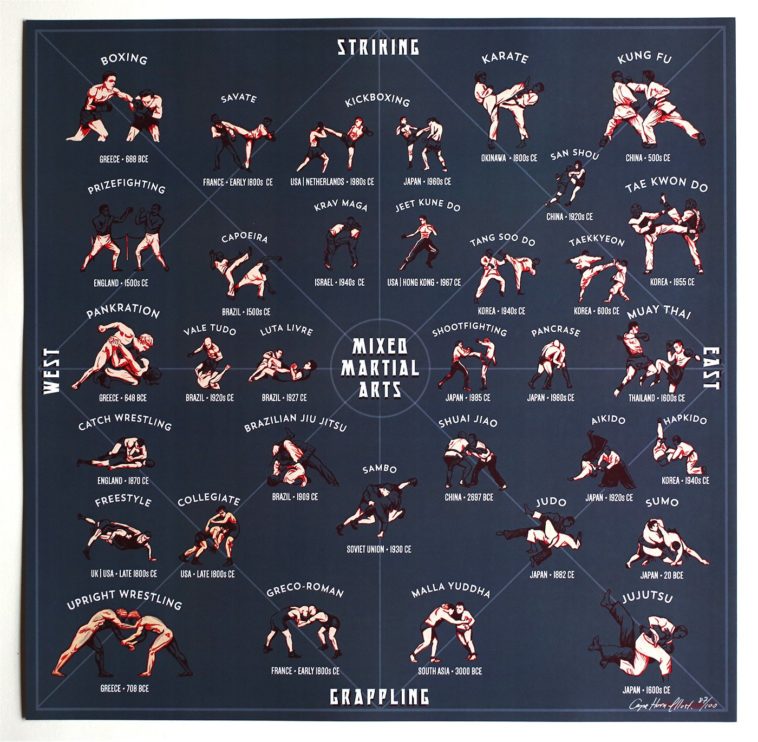The Background And Development Of Martial Arts: From Ancient Beginnings To Modern Techniques
The Background And Development Of Martial Arts: From Ancient Beginnings To Modern Techniques
Blog Article
Post By-Carver Frye
Step into the globe of martial arts, where old beginnings and modern-day techniques clash in an exciting trip of discipline and self-discovery.
As you look into the history and evolution of this exciting art type, prepare to be mesmerized by the social impacts, technological improvements, and extensive ideology that have formed it over centuries.
From the combat zones of old civilizations to the training grounds of today, martial arts have actually stood the test of time, regularly adjusting and growing.
Each strike, each activity, brings with it the weight of plenty of years of practice and wisdom, passed down through generations. This is a tale of strength, of warriors that looked for not only physical prowess, but likewise self-confidence and consistency.
Join us on this remarkable expedition as we reveal the keys, the tales, and the transformational power of martial arts.
Prepare to be motivated, tested, and for life altered by the background and development of martial arts.
Cultural Impacts on Martial Arts
As you discover the history and evolution of martial arts, you'll swiftly find the fascinating ways in which cultural impacts have formed these battle methods.
From the old worlds of China and India to the much more recent advancements in Japan and Brazil, martial arts have been heavily influenced by the cultures in which they stemmed.
As an example, Chinese martial arts, such as Kung Fu and Tai Chi, are deeply rooted in the ideology of Taoism and the idea of Yin and Yang.
In contrast, Japanese martial arts, like Martial arts and Judo, reflect the samurai warrior practices and the values of self-control and honor.
Similarly, Brazilian martial art, Capoeira, combines components of African dancing and songs, showing the social heritage of African slaves in Brazil.
These social influences not just give each martial art its one-of-a-kind attributes but likewise offer a much deeper understanding of the historic and social contexts in which they developed.
Technological Innovations and Martial Arts
With the surge of advanced weaponry and cutting-edge training tools, you've had the ability to enhance your skills and adjust to the ever-changing combat landscape.
Technical innovations have reinvented the way martial arts are practiced and taught. Virtual reality simulations currently permit you to learn realistic fight circumstances without the danger of physical damage. High-speed video cameras capture every move, allowing you to examine and excellent your strategies. Wearable gadgets monitor your heart rate, breathing, and muscle activation, offering instant responses on your efficiency.
Furthermore, the advancement of specific tools, such as resistance bands and agility ladders, has actually enabled you to enhance your rate, toughness, and agility. These technological improvements have not just made training a lot more reliable yet have also pressed the borders of what is feasible in martial arts, allowing you to get to brand-new heights in your method.
The Viewpoint and Principles of Martial Arts
The philosophy and principles of martial arts are deeply rooted in shaping your attitude and instilling technique, emphasis, and respect in your method.
1. https://dui-attorney65319.actoblog.com/30843993/below-are-the-high-qualities-to-try-to-find-in-a-leading-criminal-law-practice of mind: Martial Arts educates you to establish a strong and durable state of mind. It enables you to get rid of obstacles both on and off the floor covering, pressing your limits and standing firm in the face of misfortune.
2. Technique: Martial Arts needs discipline and self-constraint. Via routine training and adherence to strict rules and techniques, you learn to manage your impulses and establish a solid work values.
3. Focus: Martial Arts needs extreme emphasis and focus. By training your mind to be present in the moment, you boost your capacity to respond rapidly and efficiently during battle circumstances.
4. https://jewishchronicle.timesofisrael.com/former-attorney-daniel-muessig-sentenced-to-five-years-for-dealing-drugs/ : Martial Arts stresses regard for oneself, trainers, training companions, and challengers. It instructs you to value the abilities and experiences of others, cultivating a feeling of sociability and sportsmanship.
Verdict
Congratulations on completing your trip with the captivating globe of martial arts! Throughout this exploration, you have actually seen the rich history and exceptional advancement of these combat techniques.
From their ancient beginnings to the modern-day methods we see today, martial arts have been shaped by cultural impacts.
The assimilation of innovation has likewise played a substantial function in changing the way martial arts are instructed and practiced in the present day.
However, it is necessary to keep in mind that martial arts are greater than simply physical fight. They incorporate extensive approaches and leading concepts that exceed the simple act of fighting.
Take a moment to reflect on this obsolete journey and value just how the heritage of martial arts remains to thrive in the here and now, going beyond time and borders.
